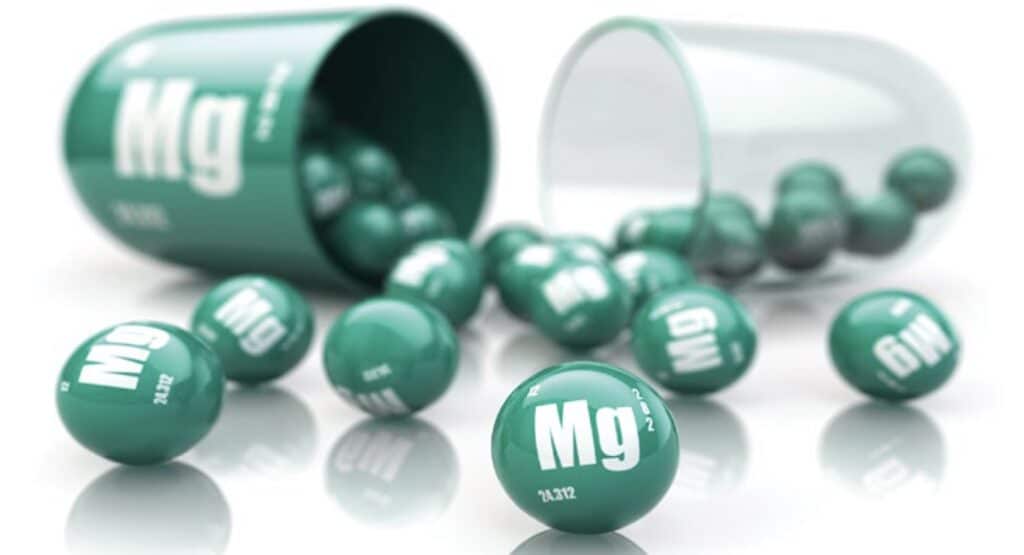Magnesium To The Rescue; Part 1
Common Signs and Symptoms of a Magnesium Deficiency
By Koby Taylor, PharmD
In recent years and especially since the start of the pandemic, I have noticed a trend in articles found in medical journals, medical case studies, and trusted health blogs where the topic seems to be focused on a “deficiency” of some sort: a deficiency of nutrients (vitamins, minerals, amino acids), sleep, focus, and even time! I started to wonder if my coming across these topics was a sort of confirmation bias or if there was something really and truly going on. With that question in mind, I conducted a review of my patient cases, looking at the oral and diet supplements I recommended. After amino acids, the second most recommended supplement was magnesium.
A Magnesium Deficiency Will Show You Symptoms
Restless legs. You have just settled into your comfy bed after a long day and are beginning to nod off to sleep. Suddenly, your legs jolt as though they are ready to jump out of bed. This symptom, sometimes called restless leg syndrome, is quite common and could be caused by a magnesium deficiency.
Trouble sleeping. Do you have trouble getting into a deep sleep? Perhaps you only get a few hours of sleep a night and are awake more than you’re asleep. This, too, could be a magnesium deficiency.
Irregular heartbeat. Magnesium deficiency may also cause or worsen arrhythmia (irregular heartbeat). Sometimes these symptoms could be combined with a headache, dizziness, shortness of breath, and an onset of sudden thirst.
Constipation. Magnesium deficiency can also cause constipation. Constipation is a sign that your bowels are dehydrated. Magnesium helps to increase the amount of water in the intestines, which can help with bowel movements.
Bone and muscle pain. Growing pains are also signs that the body could use a little boost in magnesium. If you have preteens or teenagers at home who are complaining of leg pains and achiness, you may want to explore supplementing their diets with magnesium.
Menstrual cramping. Women who experience moderate to severe menstrual cramping can benefit greatly from taking magnesium. Magnesium helps to relax and hydrate uterine muscles and offers relief from cramping pain.
Dehydration. Intense physical and mental activity as well as overcoming the common cold use many of the body’s resources to take on these challenges. Lightheadedness, dizziness, and muscle weakness or spasms are symptoms of dehydration. Magnesium is vital to proper hydration and can help alleviate these symptoms, especially since many of the most popular hydration drinks for adults and infants are devoid of the very minerals the body needs for proper hydration. For more on sports drinks and hydration, head over to our blog post that discusses this further.
Thinking, reasoning, and mood. Magnesium supports neurological pathways and synaptic transmission. So if you experience mental fatigue or lack of focus, feel moody and/or anxious, or find it hard to make decisions from time to time, you could be magnesium deficient. These symptoms are common if you’ve been dealing with a lot of pressure and stress.
Medications. If you’re someone with a diagnosed health condition and on medication, magnesium deficiency symptoms may be easily mistaken for illness-related symptoms. I highly recommend asking your provider to check your magnesium levels through a blood test to get a baseline on your levels. Studies have shown that both prescriptive and over-the-counter medications, when taken daily and over a long period of time, can deplete your magnesium as well as other vital minerals. This happens because medications have been known to create an imbalance in your gut, which limits your ability to maintain proper hydration and absorb nutrients from foods or nutritional supplements.
Eating Magnesium Dense Foods to Increase Your Intake of Magnesium
If you’re someone who doesn’t like to take daily supplements, you can increase your magnesium intake through food. Keep in mind that magnesium’s “shelf-life” in the body is twelve to twenty-four hours, depending on your activity and metabolism. So you will need to be vigilant with your diet and aware of how your body is feeling from day to day. Magnesium-dense foods include bananas, avocados, nuts, leafy green vegetables, tofu, seeds, legumes, some fatty fish, and dark chocolate (choose a product containing at least 70 percent cocoa solids; a higher percentage is even better). Do your research when supplementing with food to gauge how much you’ll need to eat to garner the recommended daily allowance (RDA). For adults nineteen years of age and older, the RDA for men is 400–420 milligrams daily and for women is 310–320 milligrams daily. For example, an average banana has thirty-two milligrams of magnesium, and a one-cup serving of avocado has forty-four to fifty-eight milligrams. These two items combined average seventy-six to ninety milligrams. It’s a good start to the day, but you’ll need triple or quadruple that amount to meet the RDA.
Magnesium is such an important topic that I will continue this discussion in the next issue. In part two, I’ll discuss eating to increase your magnesium, the types of magnesium that are on the market, optimal times to supplement, and how much to supplement.
RELATED ARTICLES
Holiday Stress Relief
Help your holiday stress naturally with our two favorite products for the season: GABA Calm &...
RELATED PRODUCTS
Click any product below for details and to visit our online store.













